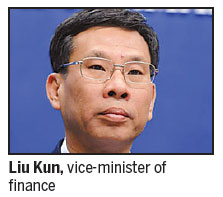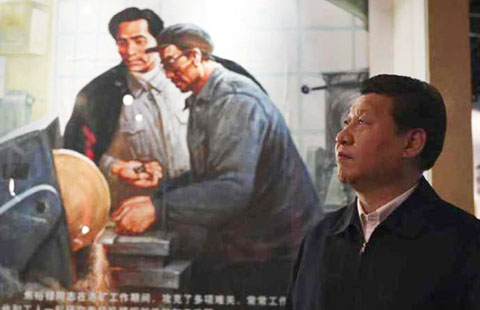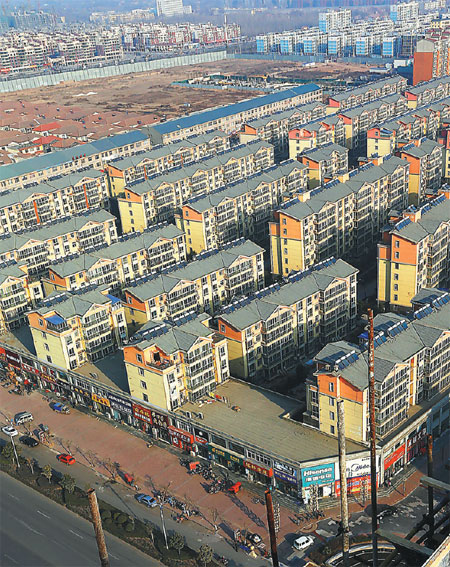Drive to urbanize requires change in financing
Updated: 2014-03-20 07:28
By Zheng Yangpeng (China Daily USA)
|
||||||||
China's urbanization drive will speed up the reform of the fiscal and public project funding, as the current financial mechanism for local governments can't meet the huge funding need, according to a newly issued urbanization plan and officials.
The unprecedented National New-Type Urbanization Plan (2014-20) outlines a "diversified" and "sustained" funding system for urbanization. And, for the first time, the State Council has agreed to let local governments issue municipal bonds.
At a Wednesday news conference, Liu Kun, vice-minister of finance, said the government will boost the bond market by allowing local governments to issue bonds at their own discretion.
The government also will spur the private sector's involvement in city construction through public-private partnerships.
Analysts said that these initiatives could be a breakthrough for China's fiscal and infrastructure funding system. The Budget Law prohibits local governments from carrying fiscal deficits and borrowing funds directly. Debts of some cities and provinces have to be raised through the Ministry of Finance.
The PPP model has not really taken off in China as government funds still shoulder most public infrastructure projects.
But as the country plans a major expansion of its transport networks and urban infrastructure in anticipation of rural-to-urban migration, traditional financing apparently can't accommodate these needs.
According to the urbanization plan, by 2020, all cities having more than 200,000 residents will be linked by standard rail, and high-speed services will connect cities with more than 500,000 residents.
Meanwhile, a population influx from rural to urban areas will necessitate huge social spending. China aims to lift its urbanization ratio from the current 53.7 percent to 60 percent, which means at least 100 million people will become urban residents over the next seven years.
According to an earlier Chinese Academy of Social Sciences report, the average cost for each rural resident to move will come to about 130,000 yuan ($21,480), of which 26,000 yuan will be provided by the government.
The government will innovate the fiscal system to incentivize local governments to integrate the migrants.
Liu said the government has already upgraded its fiscal transfer payment system, taking into consideration a city's migrant population when deciding how much to allocate to locals.

Fiscal transfer payments are crucial for local governments as the money makes up a bulk of their annual revenue, in some cases more than 90 percent.
Under previous arrangements, local governments had little incentive to integrate migrant workers as the central government only counts hukou (household registration) holders when making decisions.
Liu said the government is actively implementing a plan, laid out after the Third Plenum of the 18th Central Committee of the Communist Party of China, that will link the transfer payment with the number of migrant workers a city absorbs: The more a city turns them into full citizens, the more money it can get from Beijing.
Jonathan Woetzel, co-chair of the Urban China Initiative and director of McKinsey & Co, said that the urbanization drive should pay special attention to small inland cities as they lack financial capability to implement the massive program.
"People are voting with their feet. The big cities are OK because people flow there, and they have sufficient revenue. But smaller cities are not that attractive. China has to make sure its urbanization is harmonious so no cities fall behind," he said.
Liu Zhi, director of the Center for Urban Development and Land Policy at Peking University, said now is a good opportunity for PPP to catch up in China, helping to address financial gaps.
"In many developing countries, funding from PPP exceeds government input in terms of infrastructure investment. In China, government input accounted for more than 90 percent of infrastructure financing," he said.
zhengyangpeng@chinadaily.com.cn
|
A new town takes shape in Huaxian, Henan province. The country's new urbanization plan outlines a diversified and sustained funding system for the drive. Li Gang / for China Daily |
(China Daily USA 03/20/2014 page13)

 Fashions of the first ladies
Fashions of the first ladies
 Pro-Russian forces take over Ukraine's naval HQ
Pro-Russian forces take over Ukraine's naval HQ
 New US envoy hits ground running
New US envoy hits ground running
 HK cellist to perform at Carnegie Hall
HK cellist to perform at Carnegie Hall
 Skyscrapers in E China resemble LV check pattern
Skyscrapers in E China resemble LV check pattern
 President Xi honors memory of devoted county Party chief
President Xi honors memory of devoted county Party chief
 More than just food
More than just food
 Miss world visits cancer children in Colombia
Miss world visits cancer children in Colombia
Most Viewed
Editor's Picks

|

|

|

|

|

|
Today's Top News
Australia finds objects possibly from MH370
Tour adds 'new dimension' to ties
China largest holder of US debt
California shelves proposal
Chinese treasures on the block
China must expand inbound tourism
Hunger strike off, anger remains
Tourists offered compensation for bad air days
US Weekly

|

|







